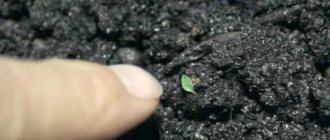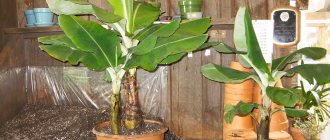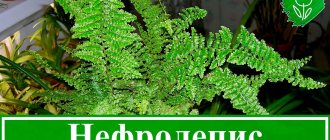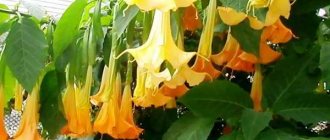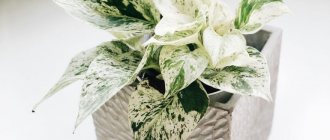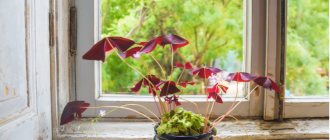Like most indoor plants that are not accustomed to the climate of our country, velvet banana is quite difficult to grow at home. In total, it can take from 1 to 3 years to bear fruit, and here a lot will depend on how large the original shoot was, as well as whether the place is well chosen in terms of lighting. If we talk about other relatives of the velvet banana, indoor plants of this family are often large. The same plant is inferior to them in height - on average, its stem can be about 7 cm thick with a constant expansion towards the base. The fruits are shaped like small pink bananas that grow in bunches and contain many other seeds of the family.
Musa VELUTINA - Velvet banana, Dwarf pink banana.
Description: Banana is a genus of perennial herbaceous plants of the Banana family, uniting about 70 species, the greatest diversity of which is observed in the tropics of Southeast Asia and the Pacific Islands.
Representatives of the genus are herbaceous plants with a powerful root system, a short stem that does not protrude above the ground and 6-20 leaves, the sheaths of which form something like a trunk. Plant height varies from 2 to 12 meters. Many side shoots are formed around the main stem, one of which subsequently replaces the previous one - thus, reproduction occurs. The roots are numerous, fibrous, and in fertile soil they go up to 5 meters to the side and up to 1.5 meters deep.
The leaves are large, soft, smooth, oblong or oval, arranged in a spiral. Their vaginas are coiled into a dense, multi-layered, fleshy tube called a false stalk. As the plant grows, young leaves appear inside the bunch, and the outer ones gradually die and fall off. In good weather this process continues at a rate of about one leaf per week.
Cultivated banana leaves reach 275 cm in length and 60 cm in width, they can be completely green, green with dark maroon spots, or green on the upper side and purple below. When the banana is ready to bloom, a long peduncle develops at the growing point of the short stem, which passes through the false stem and follows the leaves out.
Flowering occurs 8-10 months after active plant growth. The inflorescence is a raceme on which large female flowers are located at the base, then smaller bisexual flowers, and at the end there are small male flowers. All flowers are tubular. Cultivated bananas have white flowers, purple leaves on the outside and dark red on the inside.
Fruits develop only from female flowers. The size, color and shape of the fruit can vary significantly depending on the type or variety, but most often they have an oblong cylindrical or triangular shape, straightened or rounded. The length of the fruit varies from 3 to 40 cm, thickness - from 2 to 8 cm. The color of the skin can be yellow, green, red or even silver. The fruit pulp is white, cream, yellow or orange. When unripe it is hard and sticky, but as it ripens it becomes soft and juicy.
In cultivated forms, the fruit is often devoid of seeds and the plant is able to reproduce only vegetatively, however, in wild plants, the pulp of the fruit is filled with a large number of round or pointed hard seeds 3-16 mm long.
The velvet banana has a compact growth habit and unusual pink fruits. Unlike most of its relatives, this species is short, in nature it reaches a maximum height of no more than one and a half meters (usually lower), and readily blooms at a very young age. The stem, reaching a diameter of 7 cm in the largest specimens, expands towards the base. The beautiful light green leaves can grow up to a meter in length, with petioles measuring 1/3 of a leaf. Often the edge of the sheet has a red edge. Over time, the lower leaves turn yellow and fall off. Banana grows very quickly, under favorable conditions producing one leaf every 7-10 days.
The plant can bloom at the age of a year, with a stem height of 1 meter, and in some specimens it is much lower. Flowers last up to 6 months. The fruits are small, edible, pink bananas, 7-9 pcs. in a bunch, contain many seeds. This banana is also unique in that it will bloom and bear fruit freely almost all year round at home. This variety is frost-resistant. Can survive a cold winter.
Interesting: Many people consider the Banana to be a tree or palm tree, however, it is a tropical herbaceous plant, in other words, just grass, only large in size. Many species are grown for their fruit, some for the unusually beautiful flowers that appear in winter and last up to six months, and there are varieties that delight with their gorgeous foliage for many years.
The northernmost species of Japanese banana is grown as an ornamental plant on the Black Sea coast of the Caucasus, Crimea and Georgia. The tallest plant of the genus is considered to be Banana Burmese 'Giant', growing up to 12 meters.
The number of seeds in one fruit can reach two hundred, and their weight can exceed the pulp. On one axis there can be up to 300 fruits with a total weight of 50-60 kg. Bananas are characterized by a biological phenomenon known as negative geotropism - during formation, the fruits are directed downward by gravity, but as they grow under the influence of hormones, one or more axes begin to grow vertically upward.
Planting/growing
A distinctive feature compared to other species is the excellent possibility of planting a plant in a pot for the purpose of its subsequent cultivation. The planting itself is quite simple, but it is important not to forget about some of the features of this family. You should know that velvet banana grows very quickly, which is why it is worth periodically replanting the plant into larger pots. Over time, this process will slow down.
Red bananas - what kind are they?
It can decorate any table, creating a color palette together with other fruits and adding a summer mood. The contents will not disappoint either, especially if you know in advance about some of its properties.
Difference from yellow
The taste feature of red bananas is their unique fruity aroma, reminiscent of raspberries or strawberries.
Red bananas, unlike yellow ones, do not last long when ripe. In addition to the unusual color of the peel, they are distinguished by the pulp of a very delicate texture, juicy, soft, while the core remains a little harder. It (the pulp) has shades from cream to orange-pink or just pink.
But the most important difference lies in the nutritional value of this product.
They owe their unusual color to the beta-carotene they contain. We are accustomed to extracting this microelement necessary for health from carrots, sea buckthorn and pumpkin. It is indispensable in the formation of teeth and skeleton, tissue restoration, and therefore is useful primarily for children. If a child refuses to eat carrots, a red banana can serve as a completely worthy alternative. Beta-carotene is also important for eye health, skin nutrition, hair, and nails. Being a powerful antioxidant, it prevents us from aging prematurely and protects the body from cancer.
Another important element is potassium. In terms of its content, the red banana is 10 times ahead of its yellow counterpart. Potassium is important to us for:
- water-salt balance in the body;
- transmission of nerve impulses;
- production of enzymes (these are substances that help food digest).
With regular use of this product, the heart muscle is strengthened, the condition of the skin improves, and blood pressure is normalized. What other benefits of bananas are for women, men and children can be found on our website.
Where do they grow?
Banana plantations are comfortably “warmed up” in countries of the tropical and subtropical zones. In a year-round hot climate, red bananas ripen. It’s easy to guess where these miracle fruits grow from the colored stickers on them. The main importer in Russia is Ecuador.
How to grow a banana at home from seeds: preparatory stage
Experienced flower growers may be very interested in such a painstaking task as growing a banana from a seed at home. First, you need to soak the seeds for at least a day in warm water, replacing it several times. When the hard shell has softened slightly, it should be lightly scratched with a nail file or sandpaper, or pricked with a large needle, being careful not to damage the core. This process is called mechanical scarification and facilitates the germination of those seeds that, like the banana, are protected by a very strong shell.
How to eat them?
The best and most useful thing for healthy absorption by the body is not to subject it to any heat treatment. This will ensure the safety of the vitamins and microelements that this fruit is so rich in. Therefore, if you are tormented by the question of buying red bananas, how to eat them, the answer is: preferably raw. Only in this case will you learn:
- 15% of the daily value of vitamin C;
- 2% vitamin A;
- 20% vitamin B6;
- potassium;
- iron;
- beta-carotene;
- cellulose.
But when you want to taste something exotic, you can grill them, as they do in the homeland of the fruit. The benefits of dried bananas.
This is what a peeled ripe red banana looks like
What to do with them?
First of all, you need to let the fruits ripen. Everyone will appreciate the taste, aroma and beneficial qualities of ripe red bananas, and what to do with them:
- eat raw;
- fry in oil or grill;
- prepare a delicious tropical cocktail.
Here your mood and culinary preferences will tell you. Find the best mango recipes here.
By the way, due to the high potassium content, banana peels can be used as fertilizer for indoor plants. To do this, two such skins are placed in a 3-liter jar, filled with water and left for a couple of days. The fertilizer is ready. It can be used once a month.
Air and soil humidity
An important factor for the successful growth of velvet banana is the constant maintenance of high air humidity - the indicator should be between 50-70 percent. The best solution in this situation would be to choose a tray with expanded clay - pour a little water so as not to touch the bottom of the pot. This way the expanded clay will constantly remain moist, which will prevent the plant from drying out. To speed up growth, you can additionally spray the leaves with warm water. Another convenient device for maintaining the required level of humidity is a regular household humidifier.
How to cook them?
There are a great many cooking options. The simplest one was invented in Costa Rica: locals make them into sandwiches on white bread. And Indonesians know well how to prepare red bananas as a side dish: they simply fry them in oil and serve them with seafood.
The raspberry note in the aroma of red bananas will make it a welcome guest in any fruit dessert, be it a salad, ice cream or a low-calorie cake.
A banana smoothie will be an excellent substitute for chocolate bars or sandwiches for a snack. You need to cut a red banana and one kiwi into a blender bowl, add a spoonful of liquid honey, add milk and beat.
On a hot summer day, you can treat yourself and make a banana split. For this:
- A ripe banana is cut in half lengthwise and placed on an elongated dish.
- Between the two halves you need to put three scoops of ice cream: strawberry, vanilla and chocolate.
- Each ball is decorated with a cap of whipped heavy cream.
- Topping syrup (strawberry, chocolate) is poured over the whole thing.
- Sprinkle with chopped nuts.
- Cocktail cherries are placed on top of the cream.
2.Red banana.
Crimson, reminiscent of the Japanese sun. The beta-carotene content is responsible for the color of this beauty. It is also the champion among bananas in terms of vitamin C content. These bananas are very tasty and sweet, therefore they are considered one of the sweetest bananas. Moreover, these bananas contain a large amount of fiber vitamins and minerals.
They are not inferior in nutritional value to chicken meat.
And these red beauties contain 10 times more potassium than their traditional yellow counterparts. These bananas have such a soft skin that when you peel them, you involuntarily remove some of the delicious, aromatic pulp. Red banana fruits are used in cooking for making desserts or baking.
They taste like something in common between raspberries and strawberries and can be fried or baked. According to scientists, these bananas are the future because they are very nutritious, tasty and healthy. The only problem is that these bananas do not tolerate transportation very well. Therefore, they are popular only where they grow. And they grow in Costa Rica, Australia and other hot countries in Asia and South America. Local residents love to enjoy sandwiches with the pulp of these bananas.
Small bananas.
Children adore these bright yellow bananas, as their size allows a child’s hand to easily hold this delicacy, and the delicate sweet pulp is to their taste. The fruits of dwarf bananas grow no more than 7.5 cm in length, and their average size is from 2 to 5 cm. In terms of their properties and nutritional value, this banana is completely no different from its larger counterparts, which are sold in every supermarket. The inflated price for these babies is just a marketing ploy to give the average person the idea that they are a more valuable and healthy product than regular bananas.
Planting and fertilizing
Transplantation is carried out annually using transshipment. Before this, it is better to stock up on several pots with a larger diameter than the previous one. Before planting, pay attention to the condition of the sprout - if it is winter, the flower will need time to adapt to climate changes. If traces of yellowing are noticeable on the leaves, and the roots are protruding from the bottom of the pot, it is better to wait until spring to replant. First, the roots of the sprout need to be treated in a pink solution of potassium permanganate for 5 minutes. All unhealthy roots should be cut off, and the cut area should be treated with crushed charcoal.
The substrate for transplantation and fertilizer are made up of several ingredients. The most common are humus, leaf soil and sand (used in various proportions). It is necessary to feed the tree periodically; if there is flowering and growing season, it should be fertilized once every two weeks. Then you can increase the time to 2 months.
The biggest bananas.
The champion in size is the Rhino (Kluay) banana. Its length reaches the most impressive sizes, champions grow up to 35 cm. Inside there is soft pulp, which differs in taste and consistency from ordinary bananas. They have seeds that are more like seeds, but they do not interfere with enjoying the banana pulp. These bananas are the most common food for the people of Thailand. There are difficulties in transporting and storing them; local residents store them in limbo due to the fact that these bananas have a very thin, velvety peel and the pulp instantly turns into porridge even at the slightest touch.
Source
Care requirements
Bananas need the brightest possible lighting with mandatory exposure to sunlight in the summer. In winter, it also needs sun, mainly for flowering and fruiting, and additional lighting must be used. If this is not possible, then you should cut off all the leaves in advance for the winter. You should not be afraid of this - in the spring, in a warm place in the sun, they will definitely grow again. To help them, you can try cutting a rosette of old leaves in the center until the young ones show through.
Banana, even the most dwarf one, is not a plant for small rooms. It will grow well in spacious, bright, warm offices. In summer, if possible, it is better to place the plant outside.
A banana taken outside in the summer.
The temperature of its content should be high, in summer from +25°C to +35°C. In winter, some species can withstand temperatures down to 0°C. But most will need a much warmer winter - up to +16°C. Especially if they bloom and bear fruit, and this process for a banana under indoor conditions can last many months – up to a year.
Bananas need to be watered often and quite a lot, especially when kept warm/hot. In autumn and winter, watering is reduced, but only slightly. It is important to look at the temperature and condition of the soil. The soil in the pot may dry out slightly between waterings. Water for irrigation should be warm. Air humidity is no less important for bananas. The easiest way to install a humidifier. The leaves can be wiped with a damp cloth from time to time.
Interestingly, due to the large leaf surface of the leaves, a banana placed in a group of other plants will itself additionally humidify the air.
